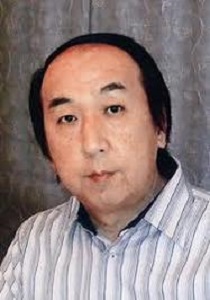De Japanse schrijver Hideo Yokoyama werd geboren op 17 januari in Tokio. Yokoyama werkte 12 jaar als onderzoeksjournalist bij Jomo Shimbun, een regionale krant in Gumma, ten noorden van Tokio, voordat hij begon met het schrijven van fictie. Hij maakte zijn literaire debuut in 1998 toen hij met zijn gebundelde politieverhalen “Kage no kisetsu” (Engels:”Season of Shadows”) de Matsumoto Seichō-prijs won; het boek stond ook op de shortlist voor de Naoki-prijs. In 2000 ontving zijn verhaal Dōki (Motieven) de Mystery Writers of Japan Award voor korte verhalen. Zijn roman “Han’ochi” (Half opgelost) uit 2002 behaalde een Konomys No. 1 ranking en maakte van hem een van de best verkopende auteurs van Japan. Hij herhaalde zijn Konomys No. 1-ranking in 2013 met “64 Rokuyon” (Engels: “Six Four”, 2016), zijn eerste roman in zeven jaar. Andere prominente werken zijn zijn “Kuraimāzu hai” (Engels: “Climber’s High”) uit 2003, waarin hij zich concentreerde op de crash van JAL Flight 123 waarover hij in 1985 als verslaggever had geschreven; de Tweede Wereldoorlog roman “Deguchi no nai umi” (Engels: “Seas with No Exit: , 2004); de politieroman “Shindo zero” (Engels: “Seismic Intensity Zero”, 2005); en de verhalenbundel “Rinjō” (Engels: “Initial Investigation”, 2004).
Uit: Six Four
“Snowflakes danced through the evening light.
The man’s legs were stiff as he stepped from the taxi. A forensics official in a police-issue overcoat was waiting outside the entrance to the station. He ushered the man inside. They passed a work area for duty officers and continued along a gloomy corridor before taking a side door out to the officers’ parking area.
The mortuary stood by itself at the far end of the grounds, a windowless structure with a tin roof. The low rumbling of the extractor fan told him there was a body inside. The official unlocked the door and stepped back. He gave the man a deferential look, indicating he would wait outside.
I forgot to pray.
Yoshinobu Mikami pushed open the door. The hinges groaned. His eyes and nose registered Cresol. He could feel the tips of Minako’s fingers digging through the fabric of his coat, into his elbow. Light glared down from the ceiling. The waist-high examination table was covered in blue vinyl sheeting; above it, a human shape was visible under a white sheet. Mikami recoiled at the indeterminate size, too small for an adult but clearly not a child.
Ayumi …
He swallowed the word, afraid that voicing his daughter’s name might make the body hers.
He began to peel back the white cloth.
Hair. Forehead. Closed eyes. Nose, lips … chin.
The pale face of a dead girl came into view. In the same moment the frozen air began to circulate again; Minako’s forehead pushed against his shoulder. The pressure receded from the fingers at his elbow.
Mikami was staring at the ceiling, breathing out from deep in his gut. There was no need to inspect the body further. The journey from Prefecture D—by bullet train, then taxi—had taken four hours, but the process of identifying the corpse had been over in seconds. A young girl; drowned, suicide. They had wasted no time after receiving the call. The girl, they were told, had been found in a lake a little after midday”.

Hideo Yokoyama (Tokio, 17 januari 1957)
